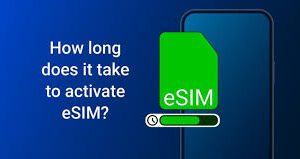Accuracy in financial transactions is no longer optional, it is non negotiable and obligational for businesses in today’s economy!
From startups to multinational corporations, every business needs a streamlined way to handle billing, record-keeping, and compliance. That’s where electronic invoicing software steps in. It’s not just a trend or a tech upgrade! it’s rapidly becoming the global standard for modern financial management.
So, is e-invoicing software truly the ultimate billing fix? Let’s dive into what it offers, how it transforms business operations, and why forward-thinking organizations are making the switch.
What Is E-Invoicing Software?
E-invoicing is the process of sending, receiving, and managing invoices digitally. Instead of manually creating paper invoices or emailing PDFs, e-invoicing systems automatically generate invoices in a structured digital format that can be read and processed by both the sender’s and receiver’s systems.
This automation eliminates manual data entry, reduces the risk of errors, and ensures invoices meet legal and tax compliance requirements. For example, companies can integrate e-invoicing systems directly with their ERP or accounting software to handle billing seamlessly across departments and clients.
To understand how e-invoicing works in practice, you can explore how an electronic invoicing software solution simplifies the process, from creation and transmission to approval and payment, while ensuring full compliance with international standards.
The Evolution of Invoicing: From Paper to Digital
Invoicing used to be a difficult, paper-heavy process. Companies printed invoices, mailed them, waited for approval, and then followed up for payment. And sometimes it took weeks to complete the process. Even when digital formats like PDFs emerged, the process remained largely manual.
E-invoicing changes the game. It’s not just “going paperless.” It’s transforming the way businesses interact financially. By using structured data formats like XML or UBL, invoices can be validated, transmitted, and processed automatically. The result? Faster payments, fewer disputes, and enhanced transparency.
Governments around the world have recognized the value of e-invoicing too. Many, including those in the EU, Saudi Arabia, and Singapore, now mandate e-invoicing for tax and compliance reasons. This push has accelerated global adoption and standardization efforts most notably through PEPPOL invoicing (Pan-European Public Procurement Online), a framework enabling secure and standardized e-document exchange across borders.
Key Benefits of E-Invoicing Software
- Unmatched Efficiency: Manual invoicing is slow. E-invoicing automates the entire process: creating, sending, and reconciling invoices in seconds. This efficiency means faster payments and improved cash flow management.
- Error Reduction: Humans make mistakes; systems don’t (well, when properly set up). E-invoicing software eliminates common issues like typos, missing data, or duplicate entries.
- Regulatory Compliance: Staying compliant with ever-changing tax and invoicing regulations can be a nightmare. A reliable electronic invoice solution ensures all invoices meet local and international requirements, automatically updating according to new rules or mandates.
- Cost Savings: Paper invoices come with hidden costs: printing, postage, storage, and administrative time. E-invoicing can reduce invoicing costs by up to 80%, making it an easy ROI win.
- Improved Data Security: Unlike paper or PDF invoices, digital invoices are encrypted and securely transmitted through certified networks, protecting sensitive financial data from tampering or fraud.
- Faster Payments and Better Cash Flow: Automated validation and instant delivery mean invoices are approved and paid faster. Businesses gain real-time visibility into outstanding payments and cash flow projections.
- Sustainability: Paperless invoicing significantly reduces environmental impact, aligning your business with modern sustainability goals.
How PEPPOL Is Revolutionizing Cross-Border E-Invoicing
One of the biggest challenges global businesses face is managing invoices across different countries, each with its own rules and systems. That’s where PEPPOL (Pan-European Public Procurement Online) comes in.
PEPPOL is an international e-invoicing network that enables standardized, secure document exchange between businesses and public authorities across borders. Instead of reinventing the wheel in each country, PEPPOL creates a common digital “language” for invoicing.
For example, a company in the UK can send an invoice to a client in Germany using the same format and platform, no compatibility issues, no manual adjustments.
This system ensures interoperability, legal compliance, and efficiency at scale, making it a cornerstone of global e-invoicing expansion.
Why Businesses Are Switching to E-Invoicing Now
E-invoicing is no longer a luxury; it’s a competitive necessity. The global e-invoicing market is expected to grow exponentially over the next five years, driven by government mandates, digital transformation goals, and financial transparency requirements.
Here’s why companies are adopting it rapidly:
- Government Enforcement: Many countries now require businesses to issue invoices electronically for tax control and fraud prevention.
- Supply Chain Digitization: Suppliers and buyers increasingly prefer digital transactions for transparency and speed.
- Scalability: Businesses can easily expand globally without worrying about local invoicing standards.
- Integration with ERP Systems: Seamless data flow between e-invoicing platforms and accounting tools eliminates reconciliation headaches.
The earlier a business transitions to e-invoicing, the smoother it can adapt to new regulations and maintain an edge in efficiency and compliance.
Implementation: How to Choose the Right E-Invoicing Solution
Adopting an e-invoicing system doesn’t have to be complicated but it does need a simple strategy. Here’s what to consider when choosing the right solution:
- Compliance Coverag: Does the software meet local tax and e-invoicing regulations? Ensure it supports mandatory standards like PEPPOL and integrates with your national tax authority’s system.
- Integration Capability: The system should easily connect with your ERP, CRM, and accounting tools. Seamless integration ensures real-time updates and reduces manual intervention.
- User-Friendliness: A powerful system is only useful if your team can actually use it. Look for intuitive dashboards, automated workflows, and minimal training requirements.
- Security and Data Privacy: Ensure the software provider uses end-to-end encryption and complies with data protection laws like GDPR.
- Scalability: Choose a solution that grows with your business supporting multiple entities, currencies, and geographies.
- Customer Support and Updates: Regulations evolve quickly. You’ll need a provider that keeps software updated and offers responsive support when you need it most.
The Future of Billing: Intelligent Automation
E-invoicing is just the beginning. As artificial intelligence and automation become embedded in financial operations, businesses can expect even greater accuracy, forecasting power, and strategic insight.
Imagine a system that not only sends invoices but also predicts late payments, reconciles accounts automatically, and offers instant compliance reports. That’s where the future is heading and e-invoicing is the foundation.
Companies that adopt these technologies today will be tomorrow’s efficiency leaders.
Conclusion: The Ultimate Fix Is Here
E-invoicing software is more than a tool it’s a transformation. It’s changing how businesses handle billing, compliance, and cash flow from the ground up. With benefits like automation, cost savings, regulatory security, and real-time transparency, it’s hard to argue against its impact.
So, is e-invoicing the ultimate billing fix?
Absolutely. And the sooner businesses embrace it, the faster they’ll reap the rewards of a smarter, more compliant, and future-ready financial system.

































